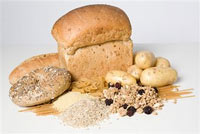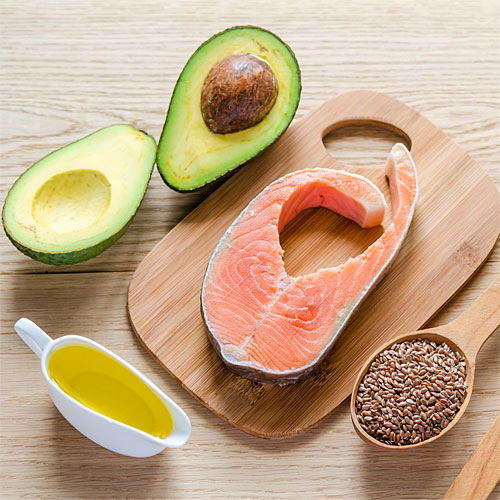- Like
- SHARE
- Digg
- Del
- Tumblr
- VKontakte
- Flattr
- Buffer
- Love This
- Save
- Odnoklassniki
- Meneame
- Blogger
- Amazon
- Yahoo Mail
- Gmail
- AOL
- Newsvine
- HackerNews
- Evernote
- MySpace
- Mail.ru
- Viadeo
- Line
- Comments
- Yummly
- SMS
- Viber
- Telegram
- JOIN
- Skype
- Facebook Messenger
- Kakao
- LiveJournal
- Yammer
- Edgar
- Fintel
- Mix
- Instapaper
- Copy Link
 Fat Cycling: The Ultimate Fat Cutting Tool?
Fat Cycling: The Ultimate Fat Cutting Tool?
We have all heard about carbohydrate (carb) cycling or low carbohydrate diets. They are touted for their potent fat burning effects and while reducing the dietary intake of carbohydrates depletes glycogen, reduces insulin secretion, and forces the body to burn fat, it is not the most efficient way of retaining muscle mass during a diet.
Cycling carbs attempts to reduce some of the negatives of low carb dieting by cycling in days with higher carbohydrate consumption in order to increase the body’s glycogen stores and use the anabolic effects of insulin. That is right, anabolic effects of insulin. Despite its negative reputation, insulin is the hormone that stimulates growth by driving nutrients into the muscle cell. In doing so, it also temporarily -emphasis on temporarily- reduces the body’s ability to use fat as fuel. This little tidbit has been over exaggerated and thus leads to the common thought process of carbs increase insulin so they must be bad.
So how exactly do carbs and fats work in the body?
Biological Importance of Carbohydrates
 Digested carbohydrates are the body’s preferred energy source, as some of the cells in your body lack the mitochondria needed to oxidize fat for energy. When not enough dietary carbs are consumed, the body attempts to convert other substances (lactate, glycerol, proprionate, amino acids) via gluconeogenesis to glucose. In addition, the liver also creates ketone bodies from fats to help meet the body’s energy requirements. The latter is the goal of virtually every ketogenic or low carb diet. However, in terms of performance, it has its flaws.
Digested carbohydrates are the body’s preferred energy source, as some of the cells in your body lack the mitochondria needed to oxidize fat for energy. When not enough dietary carbs are consumed, the body attempts to convert other substances (lactate, glycerol, proprionate, amino acids) via gluconeogenesis to glucose. In addition, the liver also creates ketone bodies from fats to help meet the body’s energy requirements. The latter is the goal of virtually every ketogenic or low carb diet. However, in terms of performance, it has its flaws.
Okay now back to the biological importance of carbohydrates. When digested, unless someone has impaired glucose metabolism, carbs are used for the body’s immediate energy needs then stored as glycogen for later use in the liver and in the muscles. Generally, a person can store as much as 400-600 grams of glycogen. After your body has met its energy requirements and filled its glycogen stores from carbs, then the excess is converted to fat. However, what you may not know is that that process, de novo lipogenesis, is an energy expensive process and the body would rather find an easier way to store body fat. Because carbs are macronutrient sparring, when you have an adequate amount of carbohydrate consumption the other macronutrients (fats and proteins) can do their jobs more efficiently. This can be a good thing in terms of sparring dietary protein during a diet to help repair, growth, and maintenance tissues such as muscle, but it can be a bad thing as any dietary fats not needed for its main biological functions (cellular health, vitamin absorption, and hormone production) are easily converted into body fat.
Carbohydrates and Performance
If you are a physique athlete, strength athlete, or a sports athlete, your carbohydrate intake directly affects your performance in the gym or on the field. Muscle contraction is fueled by Adenosine Triphosphate (ATP) and one of the major pathways to creating ATP is the anaerobic (without oxygen) glycolysis system; this system is completely dependent on the amount of stored carbs (glycogen) in the muscle. This system is compromised during low carb and even to some extent carb cycling diets leading to decreased performance in the gym. This is a major issue for anyone looking to build or retain strength during a diet. Therefore, I suggest that it would be to NOT wise compromise this system by reducing dietary carbohydrate intake.
If you would like to know more about the other pathways (Phosphocreatine System and Oxidative Energy System) of generating ATP please check out my article Why Low Carb Diets are Not Ideal for Strength Athletes. Now that we know the biological importance of carbohydrates and how they affect gym and athletic performance, how do we get shredded without compromising our strength? The answer is fat cycling.
Fat Cycling Premise
During an exercise session, the body uses a mixture of metabolic fuels (fats and carbs) to fuel all of its energy requirements. Although fats are not the primary fuel for muscles or anaerobic activity, they provide a more substantial amount of ATP than carbs. However, because they need to be oxidized within the cell, it is a much slower process which means they provide energy for your body in other ways during anaerobic exercise. During days of increased energy expenditure via exercise with a higher dietary fat intake, there is less of a chance those fats are easily or readily converted into body fat.
During rest days or less active days, energy expenditure is down and because we are not reducing carb intake any dietary fats consumed in excess of energy requirements will be readily converted into body fat; thus, the need to reduce fat intake on non-training or non-active days.
Fat Cycling Application
Energy Requirements
As great as fat cycling sounds, energy intake is still king when it comes to fat loss. Even with fat cycling, if you eat too much, you will not lose body fat. Therefore, it is absolutely critical to know how much energy/calories your body needs. I recommend keeping a food journal and averaging your daily consumption over the course of a week to find your energy equilibrium or the number of calories you need daily to maintain your weight. This is important because that is the amount of calories you will want to consume on your training days. If you are looking to lose weight at a faster pace, you may consider lowering your energy intake on your training days slightly (100-200 calories).
On your non-training days, the goal is to create an energy deficit by reducing fat intake only. My suggestion is anywhere between a 200 and 500 (22-55 grams of fat) calorie deficit depending on your maintenance calories. The more you consume on your maintenance days the bigger the deficit can be without sacrificing the biological functions of dietary fat.
Carbohydrate Requirements
The goal of carbohydrate consumption is to ensure that you maintain a full supply of glycogen in the muscles to enable the anaerobic glycolysis system to function optimally. Carbohydrate intake should make up approximately 50%-60% on your maintenance calories and stay at that intake on your off days. For instance, if your maintenance intake is 2000 calories, then your carbohydrate intake should be between 250 grams (50%) and 300 grams (60%) of carbohydrates. Whatever it may be, that intake will remain the same on your off days.
Protein Requirements
I do not believe I need to stress the importance of protein intake for athletes looking to build or retain muscle. At the minimum, you should be consuming 1 gram of protein per pound of lean body mass. Remember carbs are macronutrient sparring and because you are eating an adequate amount of them, the body’s utilization of protein will be more efficient. Therefore, you do not have to consume copious amounts of protein, but to ensure you have enough for tissue maintenance, growth, and repair I would recommend eating at least 1 gram per LEAN pound of body mass. Keep in mind, protein is the only macronutrient not stored in the body so it would be wise to consume some sort of protein source every 4-5 hours, except when you are sleeping of course, to give the body a constant supply of amino acids.
Fat Requirements
On your off or non-training days fats should make up approximately 15% of your total caloric intake. Although I would not recommend going below that, the consumption of dietary fat intake on your training days should be offset any adverse effects from your non-training days. Remember fats are used for cellular health, hormone production, and vitamin absorption so you may need to adjust the percentage of calories from carbohydrates (50%-60%) or protein intake to adhere to the minimum fat requirement. Using a 2000 calorie maintenance with a caloric deficit of 200 calories on your off days (1650 total calories) as an example, assuming carbohydrate intake being 250 grams and protein intake being 130 grams one would consume 53 grams of fat on training days and 31 grams of fat on non-training days.
Fat Cycling Bottom Line: Do Not Forget About Adherence
Fat cycling could be the best diet in the world, but if you cannot consistently adhere to its requirements then it may not be the best diet out there for you. Remember, not even the best diet in the world works if you cannot stick with it. Ultimately, we are all different and different things work better for different people. Find what works best for you and your lifestyle, stick to it, and the results will come.
About Julian Brown
JulianBrownTraining.com Julian is the co-owner of The Yard Fitness, an established fitness writer, a professional natural bodybuilder, a fitness & sport nutrition specialist, and a certified personal trainer. He began strength training at the young age of fourteen to improve his sports performance and hasn’t looked back since. Julian is a graduate of Grambling State University, ACE & NASM certified, and he has over a decade of personal experience in strength training.

